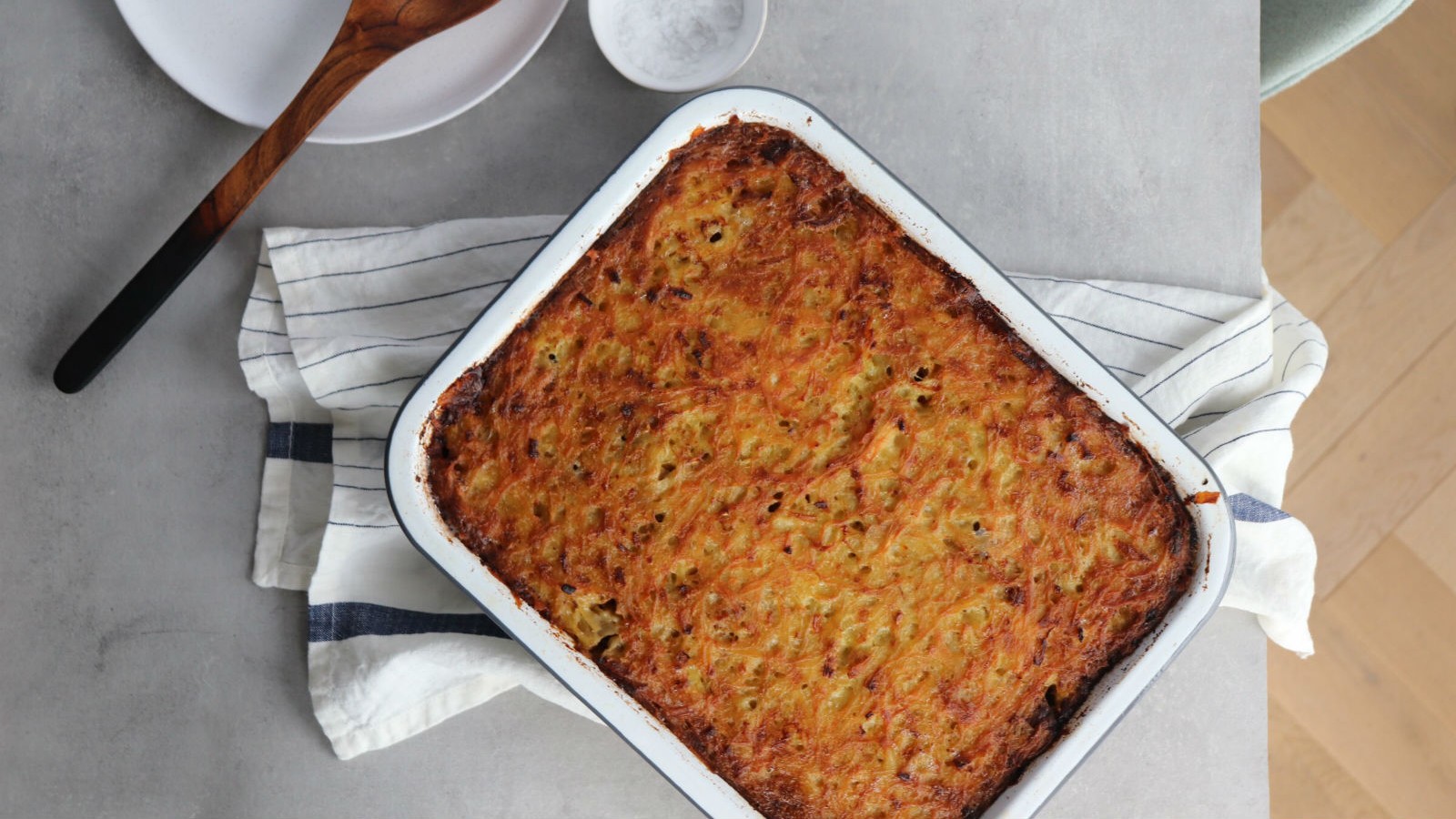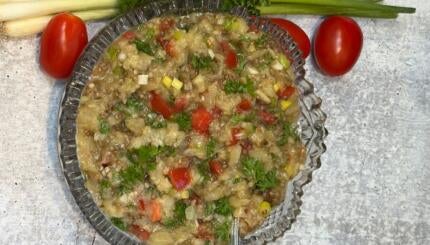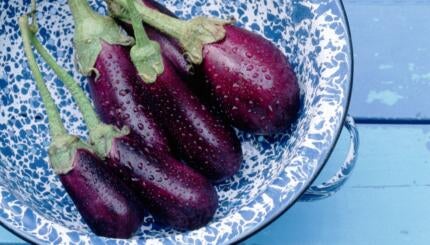“Sunday potatoes. Monday potatoes. Tuesday and Wednesday potatoes. Thursday and Friday potatoes. But shabbos, for a change… potato kugel!” – Yiddish folk song
The Ashkenazi kitchen includes many beloved foods. Kugel may be the most popular of all. Defined as a “pudding” (in the British savory side dish sense, not the American sweet dessert), a true kugel must include a starch, eggs, and some type of fat, with no water added. Today, kugels are typically baked in a casserole dish.
Over its centuries of history, kugel has developed into many varieties, though two types are most common today: potato and noodle. Each have many variations, which isn’t surprising for the centuries-old noodle kugel. Potato, however, is a fairly recent addition within the kugel collective.
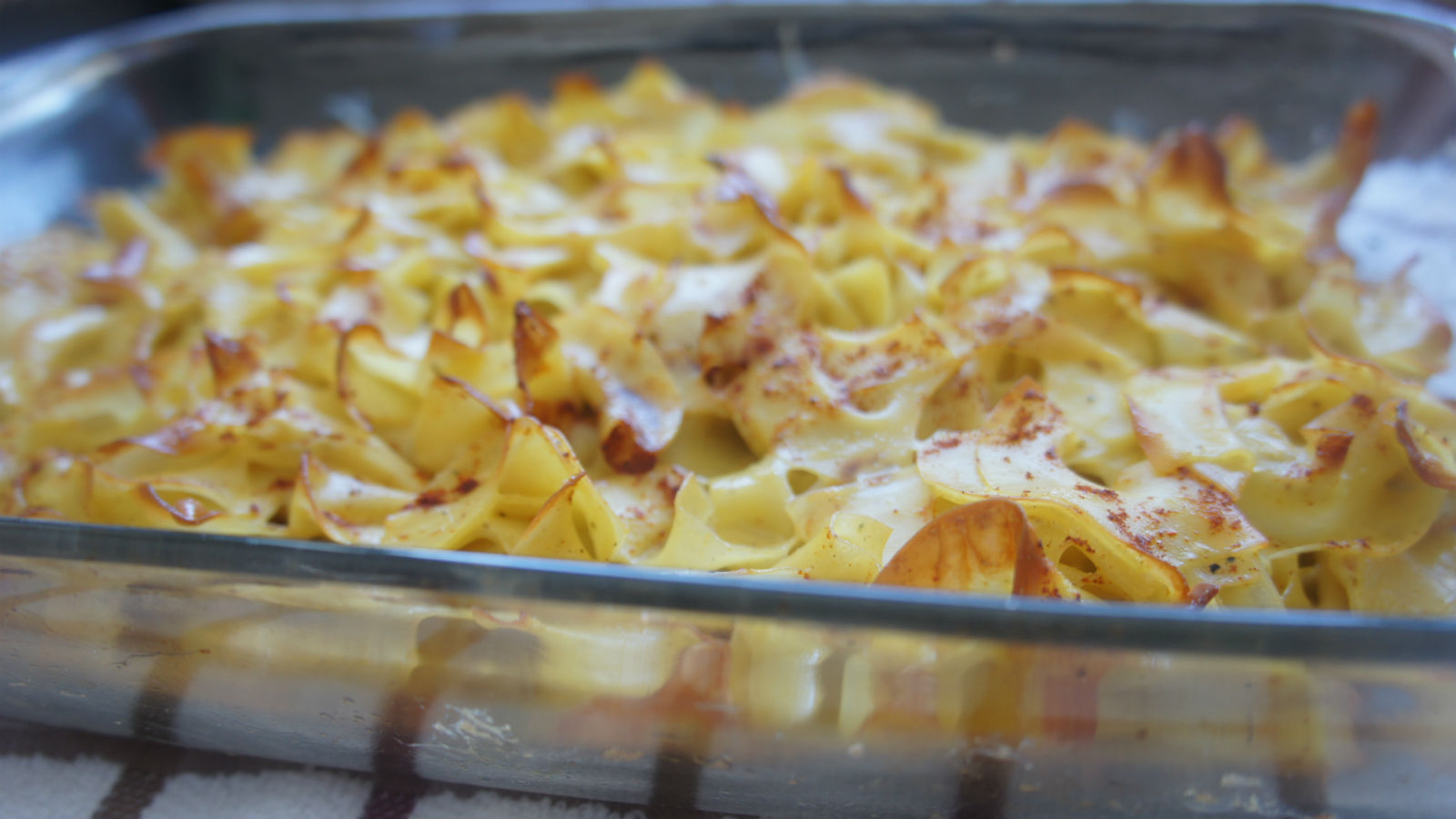
As the folk song above suggests, potatoes formed such a massive part of the Eastern European diet that it’s hard to imagine Ashkenazi cuisine without them. However, potatoes were barely consumed in the region until the mid-1800s. (And yes, within the overall history of kugel, 200 years is considered recent.)
The Nosher celebrates the traditions and recipes that have brought Jews together for centuries. Donate today to keep The Nosher's stories and recipes accessible to all.
Rapidly adopted, the highly nutritious and inexpensive potato almost singlehandedly fueled the 19th-century Ashkenazi population boom. Some people ate potatoes for three meals a day, with most Polish Jews consuming around 400 pounds of them each winter. Underscoring their significance, there are around a dozen Yiddish words for potato, including kartofl, bulbe, and erdepl (“earth apple,” a common descriptor in numerous languages).
A good cook would thus incorporate potatoes into existing dishes, but also found ways to create a little variety within an otherwise monotonous diet. Hence, potato became the newest type of kugel, and soon branched into different versions.
A Lighter Kugel
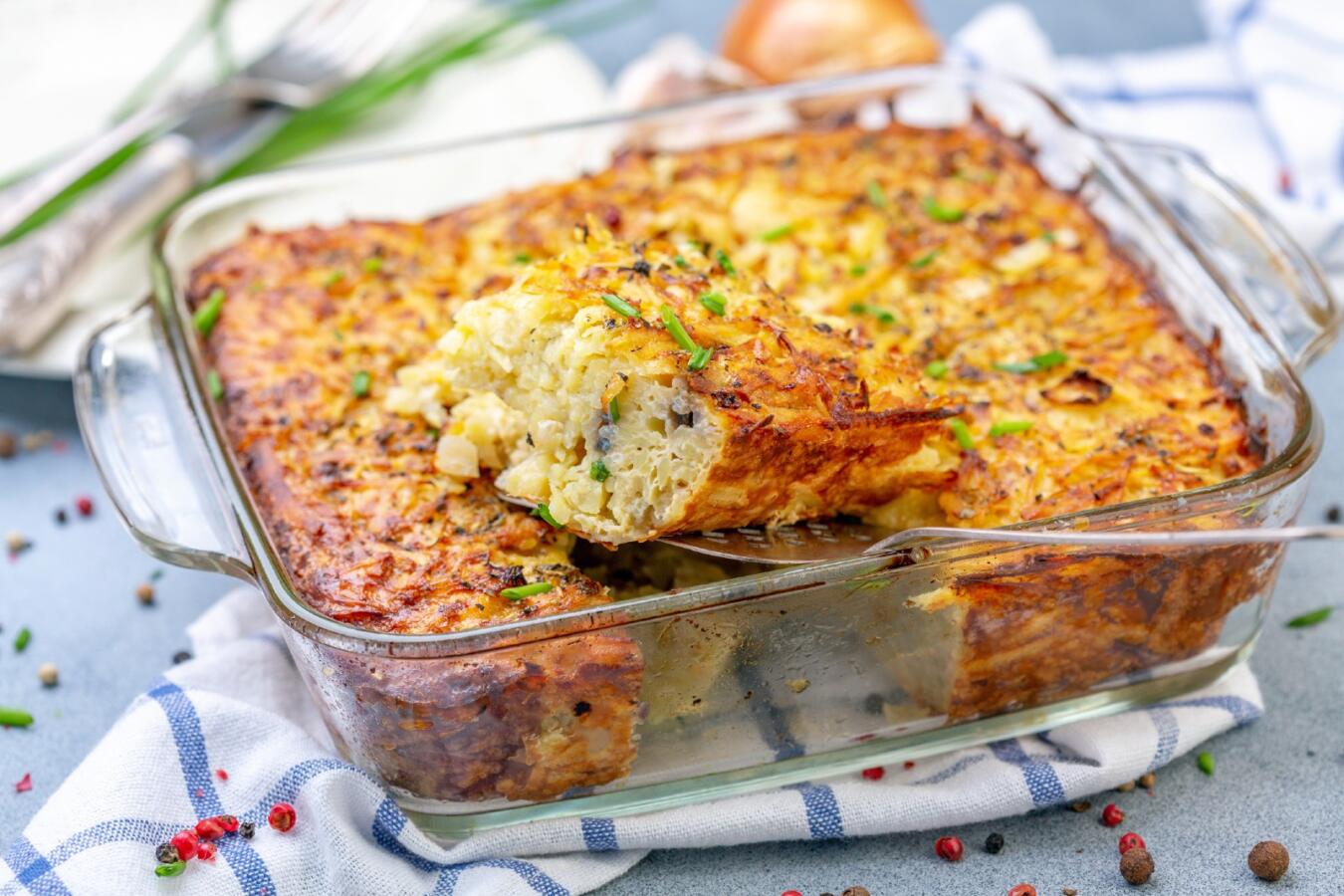
The basic potato kugel recipe includes just grated potatoes and onions, eggs, schmaltz or oil, salt, and pepper. Typical of all kugels, it uses simple but flavorful ingredients with little extra seasoning. Most importantly, it really fills the belly.
For some people, a little too much. So some Ashkenazi women found a way to lighten up potato kugel. Enter kartoflnik. A cross between kugel and bread, kartoflnik (or potatonik, as it became known in America) mixed flour and yeast into the kugel. Potato breads were well-known in the region, but kartoflnik uniquely started with raw, grated potatoes, rather than cooked and mashed ones. Thus, it held onto its potato-y flavor, while also remaining a member of the kugel family.
A close relation that falls between potato kugel and kartoflnik is ulnik. This dish used buckwheat flour with the kugel ingredients, but no yeast. The resulting pudding resembled a honeycomb to some, as the name is derived from the Russian word for a beehive.
A Beefed-Up Kugel
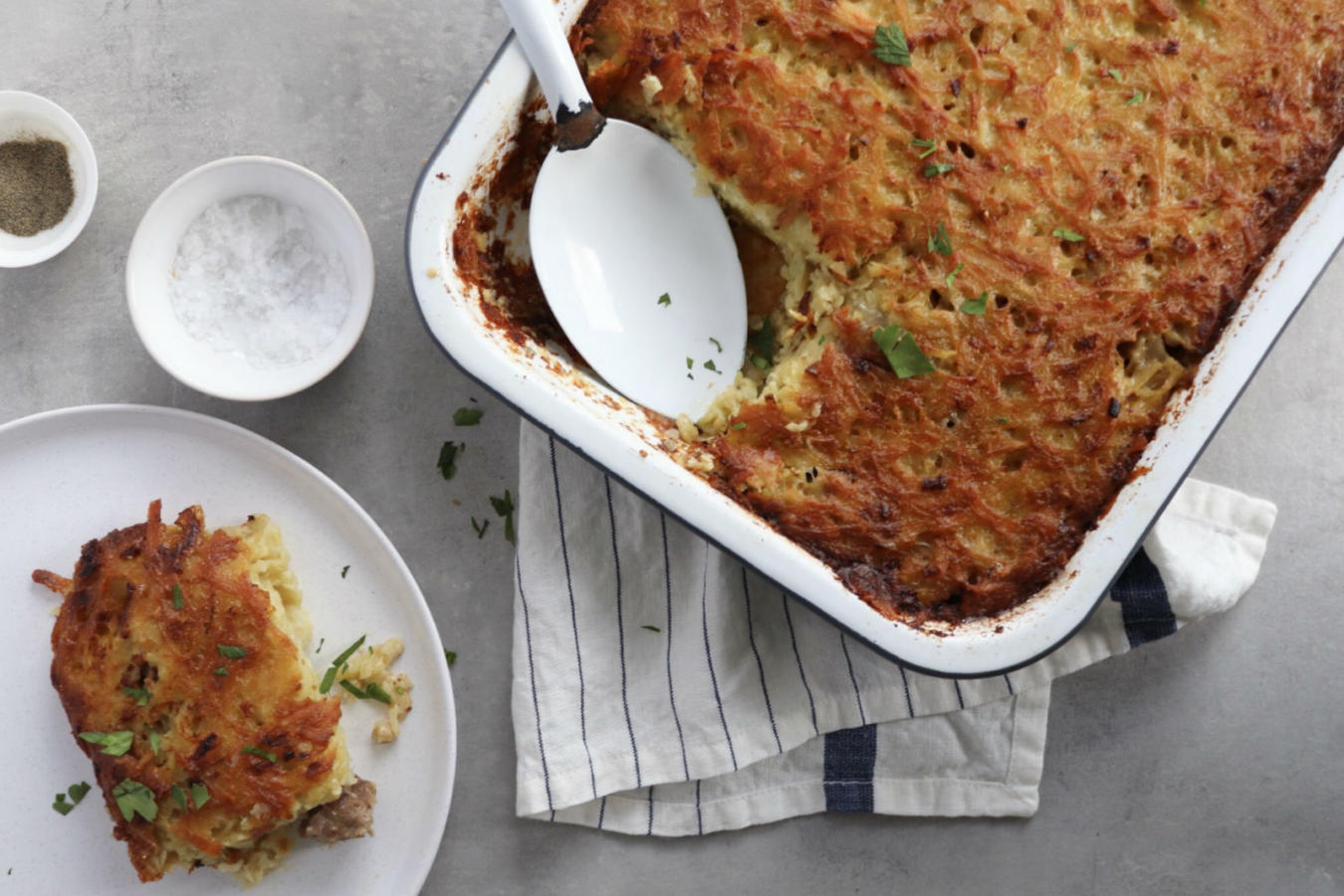
While some cooks preferred a lighter kugel such as kartoflnik, others produced an even heavier meat version of potato kugel, known today as yapchik. Beloved in Hasidic circles, it remains relatively unknown outside that community. Yapchik sandwiches a layer of melty flanken between thick layers of potato kugel and cooks it through Friday night. Delectably decadent, it crosses kugel with cholent.
Yapchik (or yapsuk as it was known in Poland and Lithuania) was originally a variant of potato kugel without any meat. Its name appears to derive from the Polish jabłczok (pronounced yab-chok), a yeasted wheat cake containing apples. Replacing the apples with “earth apples,” Ashkenazi cooks may have held on to some version of that earlier name.
Israeli expert on Ashkenazi food Shmil Holland points out that what is known as yapchik today was actually called raybak in Eastern Europe. (Raybak derives from the Yiddish word rayb meaning “to grate.”) Yapchik was everyday fare, while raybak would have been cooked overnight for Shabbat. Transpositions of names between similar dishes is not uncommon, particularly during migrations, such as the one that brought the dish to America.
Yapsuk originated in Poland and moved gradually south through Galicia and into Austro-Hungary, says Holland. From there, it migrated to the U.S. with the late 19th century Eastern European wave of immigrants. In fact, the earliest American Jewish cookbooks include kugel recipes, but none with potato. Only after the Eastern Europeans arrived did potato kugel take off in America. Many Hungarian immigrants belonged to the Hasidic movement, explaining yapchik’s enduring popularity in that community.
Kugel generally held an esteemed place in Hasidic culture, and at least since Talmudic times, meat has been considered an elevated food. Combine this with inexpensive meat in America, leading to higher consumption, and you have a formula for the succulent yapchik we know today.
Whichever version you make — potato kugel, kartoflnik, ulnik or yapchik — you’ll be connecting with the Shabbat food that was most beloved by Ashkenazi Jewry. And with so many varieties to choose from, there may be reason to rewrite that classic folk song.
